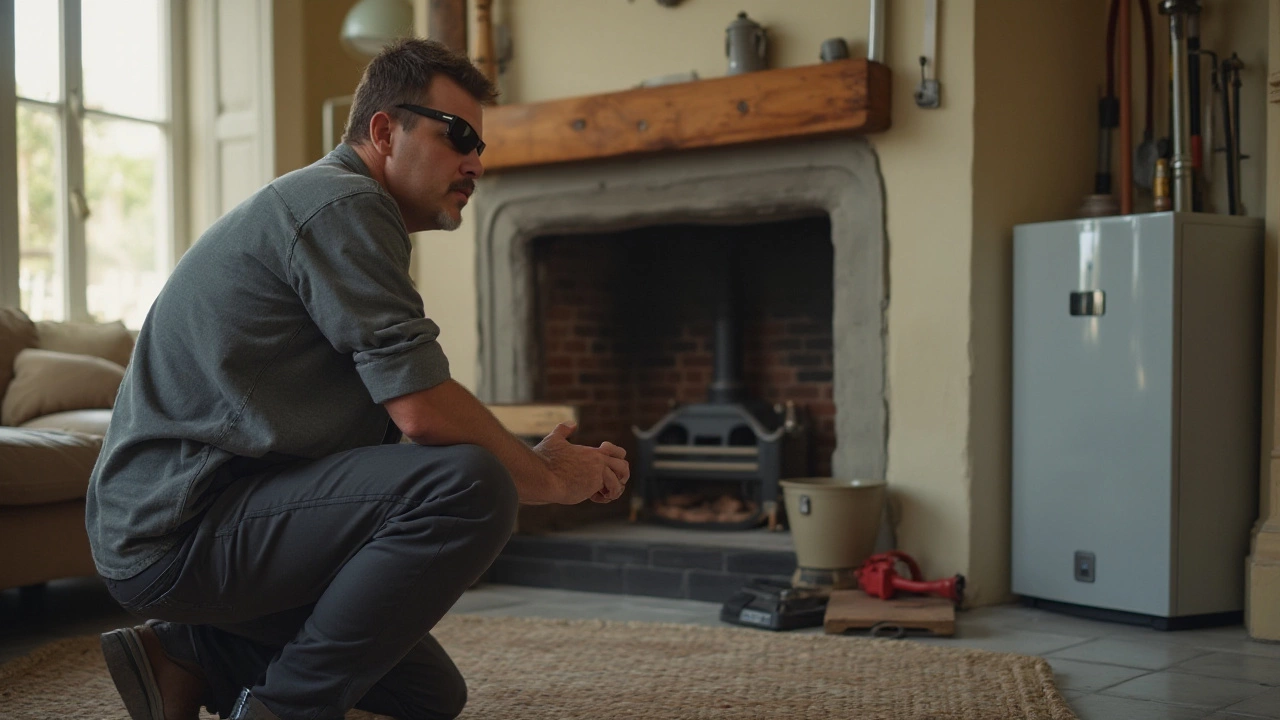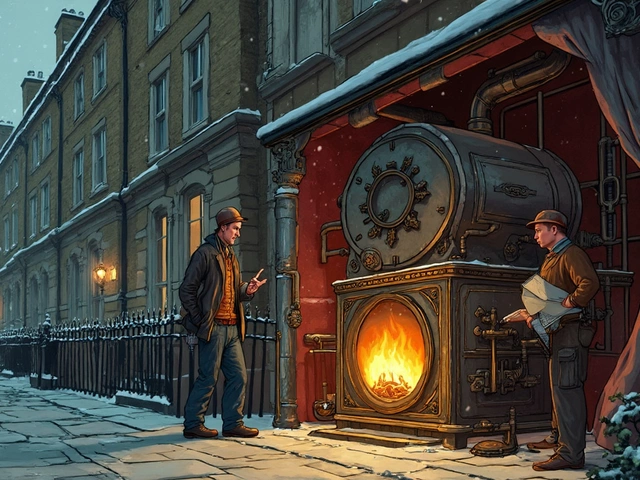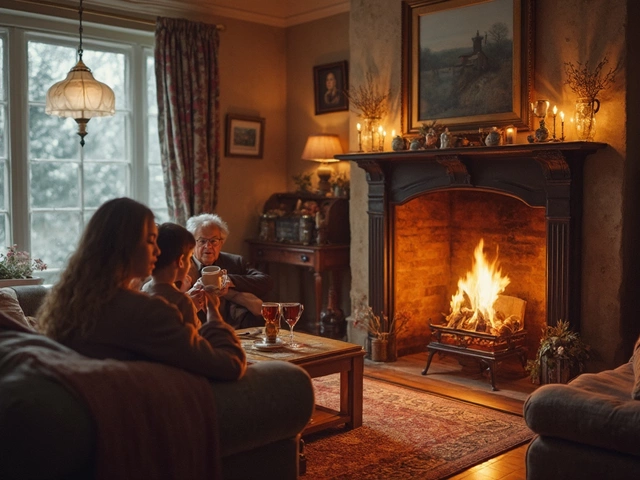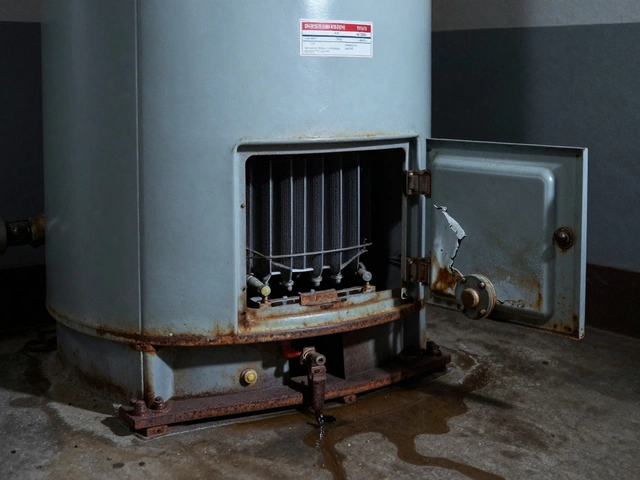When the chilly whispers of winter start weaving through your home, a dependable boiler becomes more important than ever. But what if your trusty machine falters, and you find yourself in need of a replacement? Understanding how long this process takes can save you from unwelcome surprises.
Boiler replacement isn't just about swapping the old with the new. It involves careful planning, choosing the right type of boiler, and managing the expectations for installation day. From the prep work to the final check, each step plays a part in how long you'll wait before you can bask in warmth again.
Let's unravel the process, laying out the timeline and offering insights to keep you ahead of the curve. Whether you're considering a traditional unit or eyeing those new high-efficiency models, having a grasp of the process will help you make a decision that fits both your home and schedule.
- Understanding Boiler Replacement
- Types of Boilers
- Preparations Before Installation
- The Installation Process
- Factors Impacting Duration
- Post-Installation Tips
Understanding Boiler Replacement
Embarking on the journey to replace a boiler is akin to starting out on a significant home improvement project. It’s not just about removing an old unit and installing a new one; it involves a series of steps that ensure your home remains warm and your home heating system is efficient and safe. Boilers, after all, are the heart of your home’s heating system. They heat water, producing either steam or hot water that circulates through pipes to radiators, baseboards, or a radiant floor system. This vital equipment has evolved over the years, moving from bulky units consuming lots of space and energy, to sleek, efficient systems that can significantly lower your utility bills. The decision to replace one usually stems from issues like frequent breakdowns, increasing energy bills, or the appeal of a more energy-efficient model.
One must first understand the variety of reasons prompting a boiler replacement. Engineering advancements and climate considerations have prompted many homeowners to switch to newer models. If your old boiler is over 15 years old, it might lack efficiency compared to current standards, meaning you are spending more money for less heat. Many older models operate at about 65-70% efficiency, whereas new high-efficiency models can reach efficiencies as high as 97%. Such improvements are not just technological but also regulatory. Governing bodies now impose efficiency standards for new heating systems, nudging consumers toward eco-friendly choices. However, homeowners should also consider their specific heating needs today. A single-family home may require a different type of boiler than an apartment or a house in a temperate climate.
Key Factors in the Replacement Process
When you decide to replace a boiler, a key part of the process involves understanding whether a like-for-like replacement or a system upgrade suits your needs. The position of your existing boiler might determine the complexity of the swap, particularly for those considering a different type of boiler, such as moving from a conventional system to a combi boiler which might save space but require changes in piping. Another factor is the size of the boiler, which refers not to its physical dimensions but its power output, often measured in British Thermal Units (BTU). A boiler that’s too big will not only be more expensive to buy but also to run, whereas one too small may leave your home uncomfortably cold during those frosty months.
The Energy Saving Trust notes that replacing an old G-rated boiler with a new A-rated condensing boiler could save you up to £340 a year on your energy bills.
Exploring the costs involved is another critical aspect. While the initial expenditure might be significant, usually ranging anywhere from a few thousand dollars depending on the type and complexity, investing in a modern, efficient system often pays off in the long run through lower energy bills. It’s wise to get estimates from several qualified installers to get a feel for the overall project cost. When considering hiring a professional, look for those with verified credentials and who are experienced with the specific type of boiler you intend to install.
A reliable professional not only ensures that the boiler is properly installed, but they are also critical in advising on the most suitable type of boiler for your needs. For many, consulting an expert comes early in the process. A seasoned professional will perform an evaluation of your home and existing system to recommend the most suitable type of boiler. They also consider factors such as the number of bathrooms, the family size, and the property’s insulation levels. Thus, understanding the replacement process is not about diving in but rather taking measured steps with the understanding of what these systems offer today. It takes more than just looking at costs; it’s about making a smart, future-proof investment in your home’s boiler infrastructure.
Types of Boilers
When you're thinking about replacing a boiler, it's important to know the different types available. Each boiler offers its own benefits and suits different home setups and sizes. Choosing the right type is crucial because it can affect energy use and cost. The three main types are combi boilers, system boilers, and conventional boilers, each with their specific strengths. Understanding these can help you make a more informed choice, ensuring warmth and efficiency through the colder months.
First, we have the combi boiler, short for combination boiler, which is popular in smaller homes due to its compact size and efficiency. This type of boiler heats water directly from the mains, providing hot water on demand. It's efficient because it eliminates the need for a hot water storage cylinder or a cold water storage tank. A majority of households in the UK prefer combi boilers for their energy-saving benefits and simplicity. Installing a new combi boiler usually takes less time compared to other types, as quoted by Energy Saving Trust, "Combi boilers are an efficient and space-saving choice for modern homes."
Then, there are system boilers, which need a cylinder for storing hot water but not a tank for cold water. System boilers are ideal for homes with more than one bathroom because they can supply hot water to multiple taps at once without losing pressure. They are good if your home has a higher demand for hot water. The advantage is that it provides a constant supply of hot water to any number of taps simultaneously, meaning that it is well-suited for family use. However, installation might take a bit longer due to the additional components required.
The third type, conventional boilers, also known as regular or heat-only boilers, are the traditional choice. They are suitable for larger homes with older radiator systems. They require both a cold water tank and a hot water storage cylinder. Although they are not as space-efficient as combi boilers or system boilers, they are reliable and can manage high-flow rates for larger families, enhancing benefits in homes that need to use a lot of water at the same time. Opting for a conventional boiler replacement could potentially take longer given the need for both tanks and a more complex system, but for some homes, it's the right choice.
Choosing the Right Boiler
When deciding which type of boiler is suitable, it's crucial to reflect on the specific needs and layout of your home. Factors such as the size of your property, the number of bathrooms, and how much hot water you and your family use all play into the decision. If you're living in a compact apartment, a combi boiler might be your best bet. For a sprawling, multi-bathroom household, a system or even a conventional boiler could make more sense. Each type of boiler installation carries its own unique timeline and challenges, prioritizing the one that fits seamlessly into your lifestyle will ensure maximum comfort and efficiency.
"Boiler selection isn't just about space and aesthetics. It's a long-term investment into the well-being and warmth of your home," says John Carr, an experienced HVAC consultant.
Ultimately, understanding the types of boilers will help guide you to the right choice, making sure that you and your house remain cozy and efficient through every season. It’s worth taking the time to evaluate your options carefully, consulting with professionals if needed, to secure an installation that matches your home’s specific demands and preferences.

Preparations Before Installation
Before diving into the actual replacement of your boiler, a thorough preparation can ensure a smoother and more efficient process. It’s critical to lay the groundwork, and this involves several important steps. First, you need to choose the right kind of boiler that suits your household needs. The market today offers a variety of options, from combi boilers to system boilers, each with unique features that cater to different setups. Evaluating your home's heating requirements, space constraints, and your future energy goals can guide you in making the best decision.
Homeowners should start by consulting with a recognized heating professional. A technician can assess your existing system and advise on the best boiler replacement, considering both installation complexity and energy efficiency. During this step, you can also discuss budget expectations. This early stage includes budgeting for any additional modifications that might be necessary, such as adjustments to the pipework or ventilation improvements, which sometimes arise with newer boiler systems. Having an estimate helps avoid unexpected financial surprises.
"Preparation is essential. Skipping steps can lead to increased costs and technical hitches that complicate the installation process," says James D. Stewart, a well-known HVAC specialist.
Another essential preparation task is clearing the installation area within your home. Often, the boiler resides in basements, kitchens, or utility rooms, so ensuring these areas are accessible is crucial for a seamless installation experience. Clear out any obstacles that might hinder the technicians' work and provide ample lighting for them to carry out the task safely. This not only speeds up the process but also ensures the safety of everyone involved. Communication with the installers about any household concerns beforehand can prevent potential issues.
Furthermore, it's wise to discuss the project timeline with your installer. Knowing how long each part of the process will take helps you plan accordingly, especially if you need to arrange temporary heating solutions. Ask for an approximate schedule for each day, which might include the removal of the old unit, the setup of new infrastructure, and the final testing phases. Preparedness in this aspect allows you to make alternative arrangements for activities that may be interrupted by the installation process. Utilizing these preparatory strategies could save days of discomfort without heat.
For those considering upgrading to a more energy-efficient unit, it might be beneficial to look into available government grants or incentives that aim to reduce the cost. Sometimes, choosing a high-efficiency model can qualify you for these programs, which is an excellent advantage for both your wallet and the environment. These incentives usually require an application or specific eligibility criteria, so researching these programs in advance can maximize your benefits. Taking time to understand these options not only adds value but also aligns with a sustainable living ethos.
Lastly, ensure you have a reliable power source that can support the new boiler. This is more crucial for modern systems that often depend on electronic components. Confirm with your installer that your home’s electrical system can accommodate the new unit's needs without any complications. It's not uncommon for upgrades to your home's electrical capacity to be necessary, and planning this in advance keeps the project on track.
The Installation Process
When it comes to replacing a boiler, the actual installation day is where the magic happens. This isn't just a simple switcheroo; think of it more as a finely tuned operation. The day begins with your technician arriving with all the tools and the shiny, new boiler. They'll start by turning off your home's water and heating supply to ensure everything is safe for removal of the old unit. Then, they'll carefully disconnect the existing setup, making sure not to leave any loose ends or leaky spots in the process.
This is where experience really counts. A skilled installer will be methodical, making sure each pipe, wire, and component is handled with precision. Once the old boiler is out, it often reveals just how intricate your home's heating circuitry is. This is the stage where your technician will analyze the situation and perhaps even perform a few tweaks to ensure that the new boiler installation will be seamless. Every home is unique and might present its challenges in terms of space or pipe configuration.
Positioning and Connecting the New Boiler
Next, the new boiler gets moved into place. This part can be the most exhilarating; seeing a modern piece of machinery ready to take on the cold months ahead. During placement, the technician will ensure that the unit is level and appropriately secured to avoid any future issues. Once in position, the process of linking the boiler to your home’s existing network of pipes and wiring begins. This connection process must be done meticulously because just a minor oversight can lead to inefficient home heating or system failures.
"Success in installation lies not only in following steps but understanding the artistry and engineering behind each connect," says George Harrison, a leading engineer in heating solutions.
If you are upgrading to a more complex system, such as from a conventional to a combi boiler, additional work would be required. This might involve capping off old tanks or re-routing water lines. It’s akin to choosing the best path in a maze, where the goal is optimal efficiency and the least disruption. Skilled installers intuitively understand these nuances, seeing the big picture while focused on all the tiny details.
Testing and Tuning
Once installed, it’s time to check their work. The technician will go through a series of tests to ensure everything is running smoothly. This includes checking the pressure, the temperature controls, and the system's ability to circulate heat evenly throughout the home. This part of the installation serves as the final exam for the installer where any minor adjustments can be made to ensure peak performance. They might also take this opportunity to run you through the basic operations of your new unit, offering tips and advice for the long-term care of your new heating system.
Overall, the process of boiler replacement on installation day is both a science and an art, requiring a balance of thorough technical knowledge and an expert's touch. Remember that while having hot water and heat is a necessity, having it installed properly is just as crucial for a warm and efficient home.
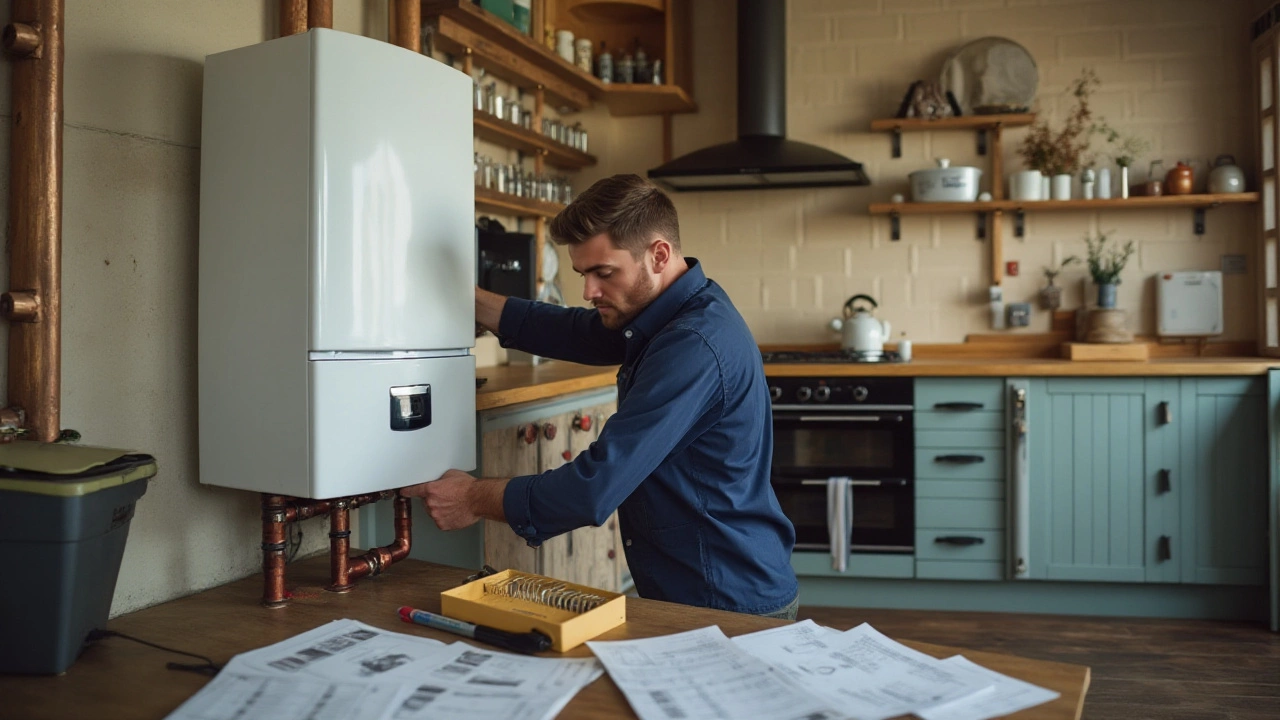
Factors Impacting Duration
Replacing a boiler isn't exactly a plug-and-play task. Several key factors can significantly influence how long it takes to replace a boiler in your home. The type of boiler you're installing is one of the most crucial elements. Whether you're upgrading to a modern combi boiler or sticking with a conventional one, the complexity of installation varies greatly. For instance, switching from a traditional system with a separate hot water tank to a combi boiler, which heats water on demand, can take extra time as new pipework may be necessary.
The existing system's age and condition also play a role. If your current boiler is an old model, the likelihood of having to adjust or replace connecting parts increases, adding to the time. Professional engineers often need to deal with rusted pipes or outdated components, which require more complex solutions than if they were dealing with newer systems. Another aspect is the location of installation, which may seem trivial but actually can affect the timeline. Boilers located in hard-to-reach places, like attics or tight basements, may demand more time to maneuver tools and equipment safely.
"What seems like a straightforward boiler replacement can quickly become intricate once engineers assess your unique setup," says Mike Eckstein, a veteran heating engineer with over two decades of experience in the field.
Let’s not forget about the unforeseen issues that might crop up, such as compliance with new regulations or discovering that your current venting system isn't compatible with your new boiler. These surprises can extend the job by a few hours or even days. Additionally, the time of year can also be a factor. In peak heating season, when boiler repairs are in high demand, securing an installation team might take longer than anticipated, potentially delaying your project start.
Moreover, let's consider if extra features are getting added alongside the new boiler installation. Features such as smart thermostats or additional radiators could make the system more efficient but also extend the installation timeframe. A typical replacement might take about one to two days without any complications, but integrating additional elements can stretch the project to three or more. It's crucial to plan ahead and allow an extra day or two in your schedule just in case complexity arises.
Remember that not all factors are within your control, but choosing an experienced and reputable installation team can speed things up. They can quickly troubleshoot and navigate through unexpected obstacles without compromising on safety or quality. With proper planning and an understanding of these influencing variables, you'll find the process smoother, and your home enjoys efficient, reliable warmth once again.
Post-Installation Tips
Once the boiler replacement is complete, knowing how to maximize its efficiency and lifespan is key. Getting accustomed to a new system involves understanding adjustments that might not be immediately obvious. For instance, familiarize yourself with the controls and settings, ensuring they are intuitively programmed to fit your lifestyle and heating needs. An often overlooked step is organizing a complete handover demonstration from the installer, where they can walk you through the operational nuances.
During the first few days, pay attention to the sound and function of your new unit. Any unexpected noises or malfunctions should be reported promptly to your installer. This is often a part of the warranty coverage period, and many installers offer a follow-up service to ensure your new boiler installation is operating correctly. Make a note of the installer’s contact information and save any warranty documentation they provide, as these will be crucial for any future service calls or part replacements.
“Regular maintenance checks can significantly prolong the life of your new boiler. Many issues start as minor faults that could be resolved if caught early,” advises Energy Savings Trust, a leading voice in home energy efficiency.
A practical tip is scheduling annual maintenance check-ups with a certified technician, as this allows an expert to assess the system’s performance, clean critical components, and address any wear and tear. While modern systems are designed to be low maintenance, neglecting routine care is a fast track to inefficiency. Documenting each maintenance session is also a smart practice, as it creates a service history that is useful for both troubleshooting and resale value.
Homeowners should also remain vigilant about their energy bills. If there's a noticeable increase without a change in usage habits, it might indicate a problem with the efficiency of the unit. Engage in proactive energy-saving habits like setting the thermostat to a reasonable temperature and insulating your home effectively to get the most out of your new home heating system. Engaging with digital solutions like smart thermostats can pave the way for personalised energy management, aligning with your lifestyle while saving on costs.
Simple Care Steps
- Check the pressure gauge regularly to ensure the system operates within the recommended range.
- Bleed radiators if cold spots develop, which enhances efficiency.
- Keep vents and airways clear from obstructions, fostering optimal air flow.
- Update the settings per season to maximize efficiency.
These straightforward yet effective practices will help your boiler repair investment deliver warmth and comfort reliably and economically throughout its lifespan. Staying proactive and informed is an investment in peace of mind, ensuring that your boiler is always ready when you need it most.

